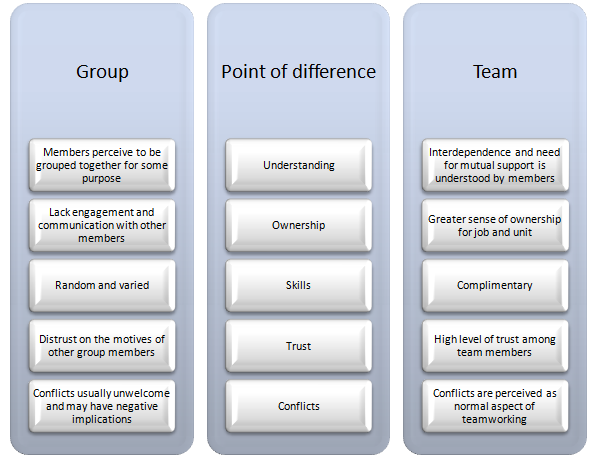Differences between Teams and Groups and their Implications
It is important to stress that “the group definition describes the individuals within it as having a common interest, while the team definition describes the members within it as striving for a common goal” (Carter, 2009, p.4). Moreover, there is an individual accountability for group members, whereas the level of accountability for team members can be individual, as well as, mutual.
Also, groups and teams differ in terms of creativity in a way that in groups creativity may be suppressed due to distrust and lack of communication amongst group members, while in effective teams high level of creativity is achieved through synergy and communication (Schermerhorn, 2011).
The following figure illustrates the main points of differences between teams and groups:
References
Carter, M. (2009) “Unique Team Enhancement: All About Team Building and How to Build a Great Team” Dorrance Publishing
Schermerhorn, J.R. Jr. (2011) “Introduction to Management” 11th edition, John Wiley & Sons

